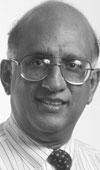

About 35 years ago, Distributed Control Systems (DCS) replaced large central control-room main-frame computers. In a traditional slow-growth business, DCS was the fastest growing new segment, generating about $100M worth of TDC 2000 revenue for Honeywell in the first year.
DCS was ‘distributed’ only when compared with the complex systems which dominated control rooms at the time. But these were still fairly large clumps of mini-computers, with multiple marshalling racks of wiring to field-based I/O.
With the arrival of personal computers, Ethernet and Fieldbus, everything started to get smaller and was networked. Wireless networking was supposed to get rid of the I/O racks. But how could anyone get away from wiring up hundreds and thousands of I/O points?
Emerson’s Delta V was the first small PC-based DCS, introduced in 1996. The new DeltaV S-series, just introduced (Sept. 2009) includes major enhancements to all I/O processing, operator displays, asset management, batch capability and system security. But its major achievement is a fundamental, innovative rethink of I/O wiring called ‘I/O on Demand’.
Innovative Electronic Marshalling essentially eliminates the need for a physical path from signal-source to controller. Instead, new single channel CHARacterization ModuleS (CHARMS – cute name) relay I/O info via the Ethernet backbone to any controller, providing single channel integrity and flexibility down to the channel level.
The human-centred design approach, and the resulting ‘I/O on demand’ architecture, is like applying the principles of lean manufacturing to the work processes around an automation project. The enthusiastic Emerson team proclaims, “After 35 years, DCS has gotten fat, and it is now time for lean. This puts the real D in DCS!”
On a typical project with say 16 000 hardwired points, I/O-on-demand alone can cut the number of cabinets by 50% and their footprint by 40%, while eliminating as much as 90% of intra-cabinet wiring. This reduces engineering time dramatically and ensures that changes to the original design can be readily accommodated without rewiring – a BIG problem with legacy DCS.
Getting rid of wires eliminates most activities associated with wiring design and installation. Cabinets, wire, terminations, cable tray design, fusing, installation drawings and a host of other activities are gone. The S-series incorporates a major enhancement for WirelessHART networks, cutting wireless network design time by about 20%.
By putting usability and productivity at the heart of product design, Emerson meets two vital needs of today’s global environment: a) Skills shortages in emerging markets; and b) an ageing experienced workforce in the developed world.
DeltaV S-Series is no ivory-tower re-think. Emerson insiders tell me that they worked the design every step of the way with a large petrochemical customer.
Bravo, Emerson team, for yet another engineering and market coup!
CK Prahalad: The New Age of Innovation
Last week at a TiE Meeting in San Diego, we had a ‘fireside chat’ with CK Prahalad. Business Week said of him: “A brilliant professor at the University of Michigan, he may well be the most influential thinker on business strategy today.” As is my wont, I sat close up, just a few feet away, to absorb the feelings underlying the philosophy. Years ago, I sat like this with Peter Drucker.
Prof. CK Prahalad has been named in every major survey for over 10 years as one of the top 10 management thinkers in the world. He is the author of several bestselling management books. His new book is ‘The New Age of Innovation’.
To paraphrase CK: We must understand the past, but not be constrained by it. You cannot start with where we are, and yet that is what most strategy does. When you start with the current situation you can only extrapolate. Strategy is not about extrapolation. Our job is to imagine the future first and fold it in.
CK gave me a key, new insight with one of his examples: Value is embedded in the customer experience.
I took my 5-year-old grand-daughter to buy a Teddy Bear this weekend. We could have gone to ToysRus to choose one which would have cost about $25. We went instead to the ‘Build-a-Bear Workshop’. There the little girl picked the shape and colour of the bear, stuffed it herself, picked out its heart and put it in place (with a promise to be always kind and gentle), selected the voice (to giggle when squeezed), gave the bear a name, picked out a cute costume and shoes for it, and received a birth certificate after supplying an e-mail address and phone number. The toy cost me $50 (and I estimated the store profit-margins to be a lot higher than typical). We could have bought several accessories, including a crib or cradle, but did not. I looked up Build-a-Bear Workshop – 346 retail stores worldwide, revenue $500M, with strong growth.
CK Prahalad proceeded to apply this ‘what does the customer really need?’ thinking to truck tyres, and pace-makers, as further examples. He made us recognise that legacy business constrains, while new-tech makes new magic possible, and levels the playing-field.
My grand-daughter did not buy a toy – she bought a friend into her family. Customer experience is what sells.

© Technews Publishing (Pty) Ltd | All Rights Reserved